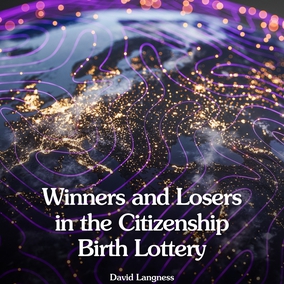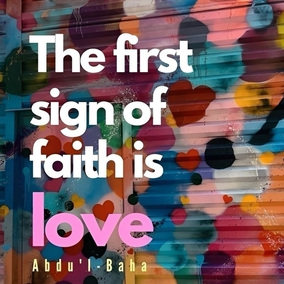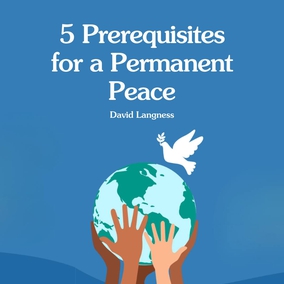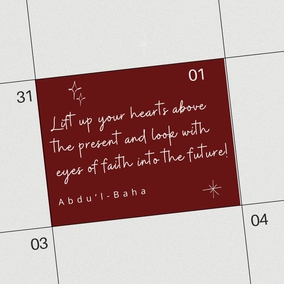The views expressed in our content reflect individual perspectives and do not represent the authoritative views of the Baha'i Faith.
The young teacher Anisa Qualls stood before a classroom of children in Chennai, India. She held up the first visual aid of the lesson plan we had so carefully discussed – a container of water.
“You can see what I have in my hand,” she said.
“It’s water,” the children replied.
“Who needs water to survive?”
“Everyone,” someone said. She glanced around at a class of bobbing heads.
She drew an H20 molecule on the board and challenged a young boy to show what made the water, using Tinker Toys. He took the sticks and balls and recreated a water molecule, as everyone leaned in to watch.
The teacher held up the boy’s brilliantly constructed water molecule. She wiggled a connector block and asked, “What if I break up our H20 molecule by separating the oxygen from the hydrogen.”
“Please, don’t! We will have no water!” cried one student.
“Ah,” she exclaimed. “So we must keep the hydrogen and oxygen clinging together, as they have always been? You are very wise. The magnetism that holds this hydrogen and oxygen in place keeps the water molecule intact, and water sustains life for everyone in the world.”
Next, she wrote the word Love on the board. She turned and gazed around the room to ask, “How is love like H20?”
One by one, the students began to smile as the light dawned. She continued.
‘We must hold on tight, and work together. If we let go of each other, our efforts will fall apart. Love is the bond that has always kept communities alive.”
 In the weeks that followed, the children learned to collaborate. They examined not only science concepts but their capacity to connect. They eagerly read newspaper articles on local water sanitation needs. They became activists for the issue. They taught conflict resolution. They learned ways to bring safer drinking water to their community. Their resulting service project, the first of many, reshaped their community culture and methods of collaborative problem solving over the next few years.
In the weeks that followed, the children learned to collaborate. They examined not only science concepts but their capacity to connect. They eagerly read newspaper articles on local water sanitation needs. They became activists for the issue. They taught conflict resolution. They learned ways to bring safer drinking water to their community. Their resulting service project, the first of many, reshaped their community culture and methods of collaborative problem solving over the next few years.
This class worked for a higher collective purpose. They served with love to create a ripple effect in the community. The metaphor suggests parallels of more elegant design in the world of physics. Max Planck, the father of quantum mechanics, revealed how a small particle of matter does not confine itself to just one part of a molecule but “in a sense, exists simultaneously in every part of the system. And this simultaneous existence includes not only the circle of force around the particle but also its mass and its charge.”
I would call that oneness. Wouldn’t you? The Baha’i writings suggest that the same principles guiding the social community mirror their effectiveness in the spiritual community.
Love is the most great law that ruleth this mighty and heavenly cycle, the unique power that bindeth together the divers elements of this material world, the supreme magnetic force that directeth the movements of the spheres in the celestial realms.- Abdu’l-Baha, Selections from the Writings of Abdu’l-Baha, p. 27.
If children can achieve oneness, what stops adults? Find out in Part II of this essay.
















Comments
Sign in or create an account
Continue with Googleor